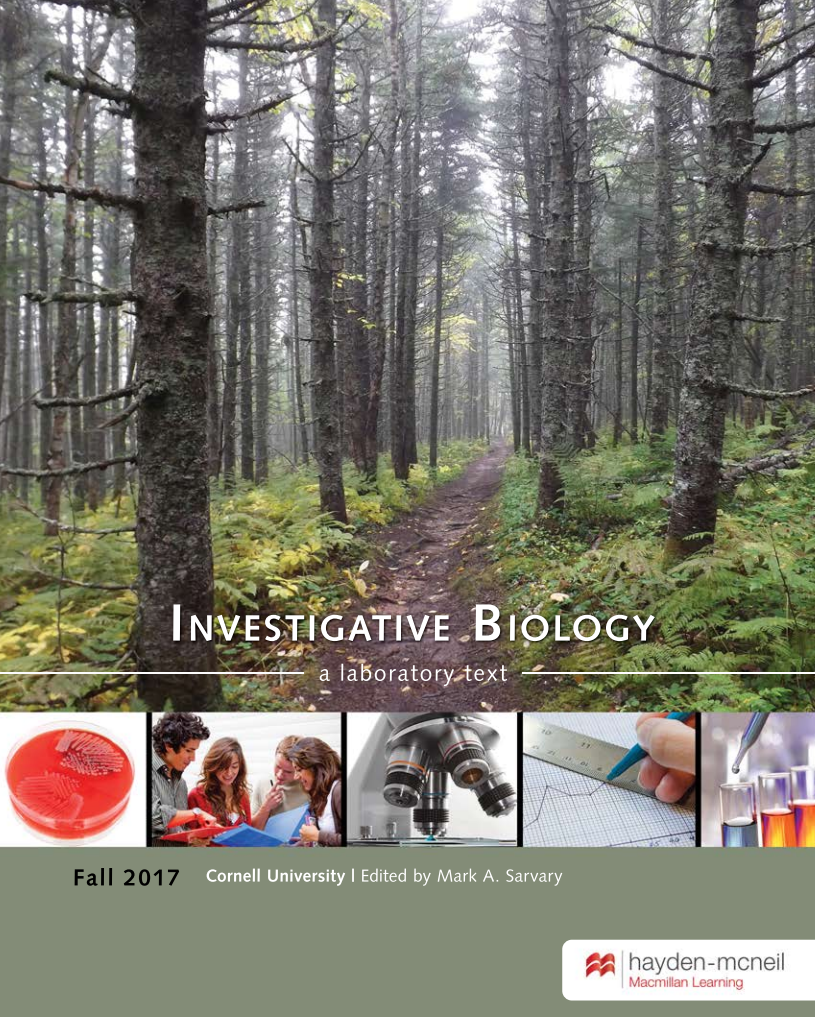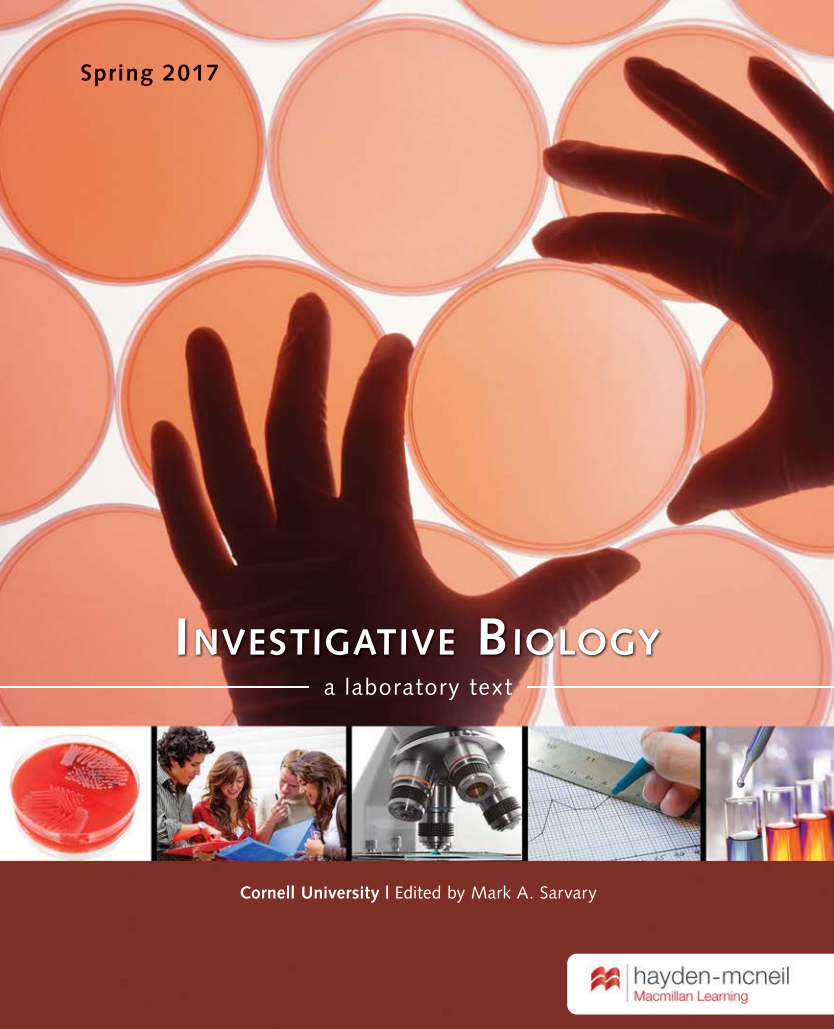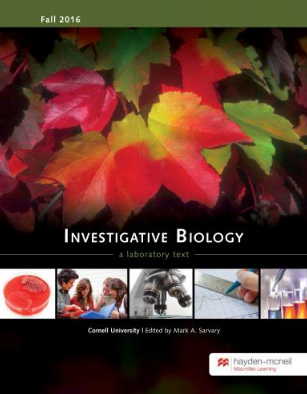Summary:
At the Investigative Biology Teaching Laboratories, we have been developing and assessing a variety of pedagogical methods to train the next generation of scientists and science educators. We have not been afraid to test innovative tools to improve the students’ learning experience. Education research is led by Mark Sarvary, the director of the laboratories, who is the PI on all of these projects, with the help of education-research postdoctoral fellows and graduate teaching assistants. Our goal is to share evidence-based pedagogies with a broad audience, therefore we aim to publish in open access journals.
We are all lifetime learners, therefore our teaching constantly improves. The recent paper discussing how instructors can choose classroom observation methods was written in collaboration with two graduate student teaching assistants in Investigative Biology (Asgari, Sarvary et al., 2021). These assessment methods provide valuable information to instructors, that they can use in promotion packages, fellowship, and award applications and to improve their own teaching.
As we moved to remote instruction in March 2020 due to the COVID-19 pandemic, we developed a student-centered approach to this transition, finding an inclusive and equitable solution for online learning with cameras (Castelli & Sarvary, 2021) and establishing the best practices for our undergraduate teaching assistants (Asgari & Sarvary, 2020).
We assessed the peer-review method we use to teach scientific writing (Biango-Daniels & Sarvary, 2020), and evaluated the effectiveness of our practical exams (Deane-Coe, Owens & Sarvary, 2017) to be able to improve the education we provide. We are part of many collaborations, expanding the ideas beyond our classroom (Meaders, Sarvary et al., 2021)
Technology plays an important role in student-engagement in Investigative Biology. We use digital pedagogy to turn lecture into dialogues (Sarvary & Gifford, 2016) and encourage the Bring Your Own Device (BYOD) movement . We have been using formative assessment with the help of a web-based response system, Poll Everywhere, in our 400+ student classrooms since 2012 (Sarvary & Gifford, 2017).
We were among the first to teach freshmen how to program in the statistical software R (Sarvary, 2014), and this innovation shaped how biostatistics is taught in many courses at Cornell today. The course employs a variety of student-centered pedagogies including case studies (Drott & Sarvary, 2016), problem-based learning, reflection, debate, role-playing (Sarvary, 2015), presentations, hands-on activities, peer-teaching, peer-review, and inquiry-based learning. Through these active-learning exercises, students become equipped with the critical thinking and problem-solving skills they need for their research projects.
These evidence-based education research projects conducted in Investigative Biology have helped many educators around the world.
Publications (click on the links to access the papers):
Asgari, M., Miles, A., Lisboa, S. and M.A. Sarvary (2021). "COPUS, PORTAAL, or DART? Classroom observation tool comparison from the instructor user’s perspective". Frontiers of Education. DOI: 10.3389/feduc.2021.740344
Castelli, F.R., and M. A. Sarvary (2021). Why students do not turn their video cameras during online classes and an equitable and inclusive plan to encourage them to do so. Ecology and Evolution. DOI: 10.1002/ece3.7123
Clara Meaders, Michelle K Smith, Timothy Boester, Anne Bracy, Brian A Couch, Abby G Drake, Saima Farooq, Bashir Khoda, Cynthia Kinsland, A Kelly Lane, Sarah E Lindahl, William H Livingston, Ayesha Maliwal, Amber Mccormick, Anya I Morozov, Jennifer L Newell-Caito, Katharine J Ruskin, Mark A Sarvary, Marilyne Stains, Justin R St, Stephanie R Thomas, Cindy Van Es, Erin Vinson, Maren N Vitousek and MacKenzie R. Stetzer (2021). What questions are on the minds of STEM undergraduate students and how can they be addressed? Frontiers in Education, DOI:10.3389/feduc.2021.639338
Megan Biango-Daniels & Mark A. Sarvary (2020). A challenge in teaching scientific communication: academic experience does not improve undergraduates’ ability to assess their or their peers’ writing. Assessment & Evaluation in Higher Education, DOI: https://doi.org/10.1080/02602938.2020.1812512
Sarvary, M.A. and K.M. Gifford (2017). The benefits of a real-time web-based response system for enhancing engaged learning in classrooms and public science events. Journal of Undergraduate Neuroscience Education, Vol. 15., issue 2. link
Deane-Coe, K.K., M. A. Sarvary and T.G. Owens (2017). Student performance along axes of concept novelty and complexity in introductory biology: lessons from a unique factorial approach to assessment. CBE Life Sci Educ., Vol. 16. No. 1. link
Sarvary, M.A. and K. M. Gifford (2016). Engaging Students in Large Classrooms: Turning Classical Lectures Into Dialogues Using Digital Pedagogy. Examples, Benefits and Pitfalls. Proceedings of the 8th annual International Conference on Education and New Learning Technologies (EduLearn16), pp. 7089-7097, doi:10.21125/edulearn.2016.0547. link
Asgari, M., & M. A. Sarvary (2020). The Value of Undergraduate Teaching Assistants in Synchronous Online Learning Environments: 10 Steps That Can Make a Positive Change. The Teaching Professor, September 14, 2020. link
Olabisi, L.S., Schwarz, K., Lambert, K.F., Garlick, S., Zinnen, T., M. Sarvary, Jeanette Shakalli, J. (2020). University Practices for Making Community-University Partnerships Work for All. Public Engagement Reflections of the American Association for the Advancement of Science. October 27. 2020. https://www.aaas.org/programs/center-public-engagement-science-and-technology/reflections/university-practices-making
Castelli, F.R., Asgari M. and M. A. Sarvary (2020). Benefits of the Undergraduate Teaching Assistant Experience in an Introductory Biology Laboratory Course and Other STEM Courses. Advances in Biology Laboratory Teaching, Publication of the Association for Biology Laboratory Education (ABLE), vol. 41., Article 61. (www.ableweb.org)
Drott, M. and M.A. Sarvary (2016). Why did the snake cross the road? A Population Genetics and Habitat Conversation Case Study. National Center for Case Study Teaching in Science. http://sciencecases.lib.buffalo.edu link
Sarvary, M.A. (2014) Biostatistics in the Classroom: Teaching Introductory Biology Student How to Use the Statistical Software ‘R’ Effectively. Tested Studies for Laboratory Teaching, Peer-Reviewed Proceedings of the 35th Conference of the Association for Biology Laboratory Education (ABLE), vol. 35., pp. 129-131. (www.ableweb.org) link
Hester, L. L., M. A. Sarvary, and C. J. Ptak (2014). Mutation and Selection: An Exploration of Antibiotic Resistance in Serratia marcescens. Tested Studies for Laboratory Teaching, Peer-Reviewed Proceedings of the 35th Conference of the Association for Biology Laboratory Education (ABLE), vol. 35. pp. 98-132. (www.ableweb.org) link
Sarvary, M.A. (ed.). (2012-2021, every semester). Investigative Biology: a laboratory text, Hayden-McNeil Publishing, Plymouth, MI.
Sarvary, M.A. (2013). Test Bank revision, In: Biology of Humans: Concepts, Applications, and Issues, 5th edition by Judith Goodenough and Betty A. McGuire, Benjamin Cummings Publishing.
Sarvary, M.A. (2013). Study Guide revision, In: LIFE: The Science of Biology, 10thedition by Sadava et. al, W.H. Freeman Publishing.
Sarvary, M.A. (2011). Test Bank revision, In: Biology of Humans: Concepts, Applications, and Issues, 4th edition by Judith Goodenough and Betty A. McGuire, Benjamin Cummings Publishing.





